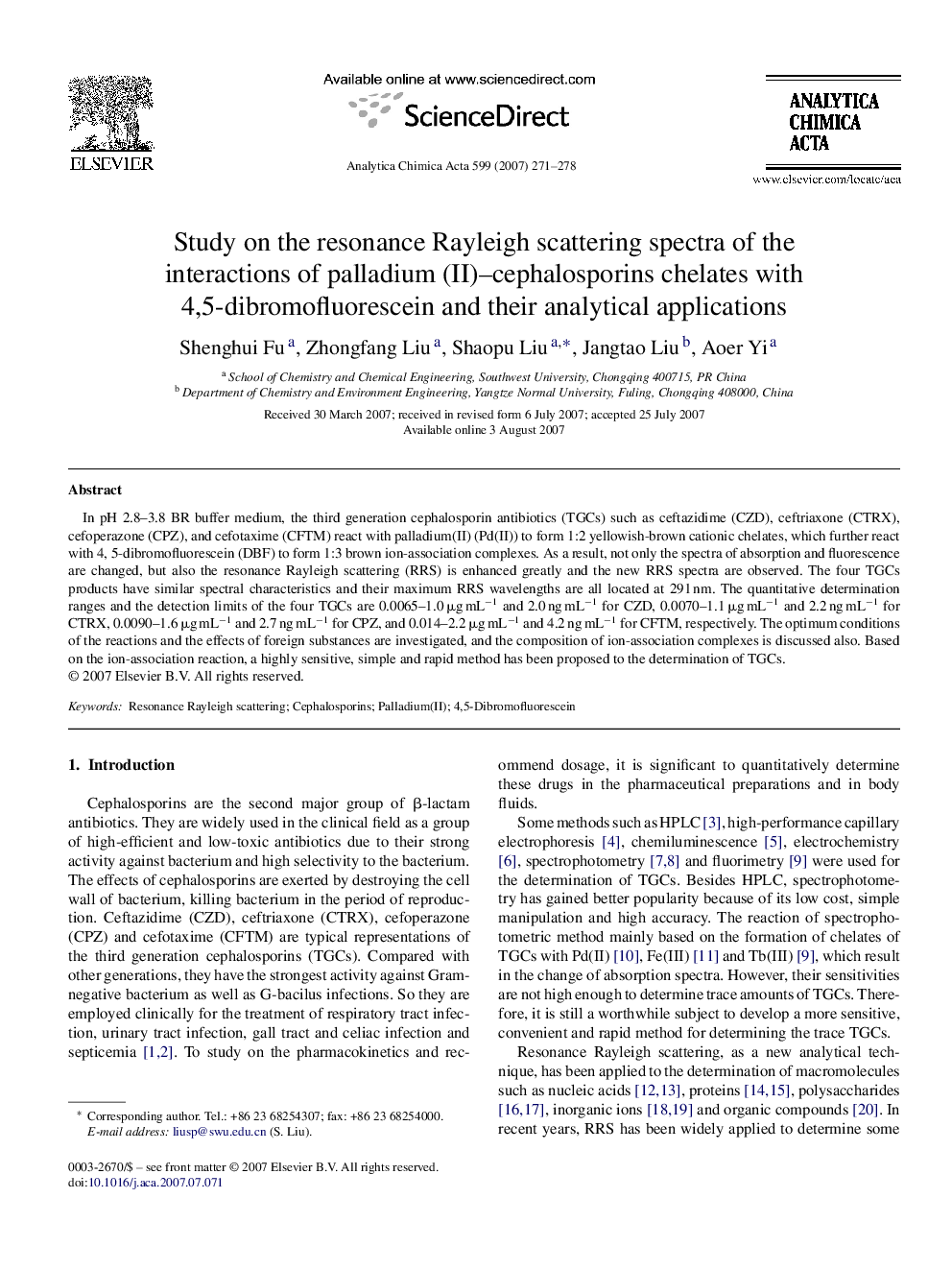| کد مقاله | کد نشریه | سال انتشار | مقاله انگلیسی | نسخه تمام متن |
|---|---|---|---|---|
| 1169709 | 960647 | 2007 | 8 صفحه PDF | دانلود رایگان |

In pH 2.8–3.8 BR buffer medium, the third generation cephalosporin antibiotics (TGCs) such as ceftazidime (CZD), ceftriaxone (CTRX), cefoperazone (CPZ), and cefotaxime (CFTM) react with palladium(II) (Pd(II)) to form 1:2 yellowish-brown cationic chelates, which further react with 4, 5-dibromofluorescein (DBF) to form 1:3 brown ion-association complexes. As a result, not only the spectra of absorption and fluorescence are changed, but also the resonance Rayleigh scattering (RRS) is enhanced greatly and the new RRS spectra are observed. The four TGCs products have similar spectral characteristics and their maximum RRS wavelengths are all located at 291 nm. The quantitative determination ranges and the detection limits of the four TGCs are 0.0065–1.0 μg mL−1 and 2.0 ng mL−1 for CZD, 0.0070–1.1 μg mL−1 and 2.2 ng mL−1 for CTRX, 0.0090–1.6 μg mL−1 and 2.7 ng mL−1 for CPZ, and 0.014–2.2 μg mL−1 and 4.2 ng mL−1 for CFTM, respectively. The optimum conditions of the reactions and the effects of foreign substances are investigated, and the composition of ion-association complexes is discussed also. Based on the ion-association reaction, a highly sensitive, simple and rapid method has been proposed to the determination of TGCs.
Journal: Analytica Chimica Acta - Volume 599, Issue 2, 19 September 2007, Pages 271–278